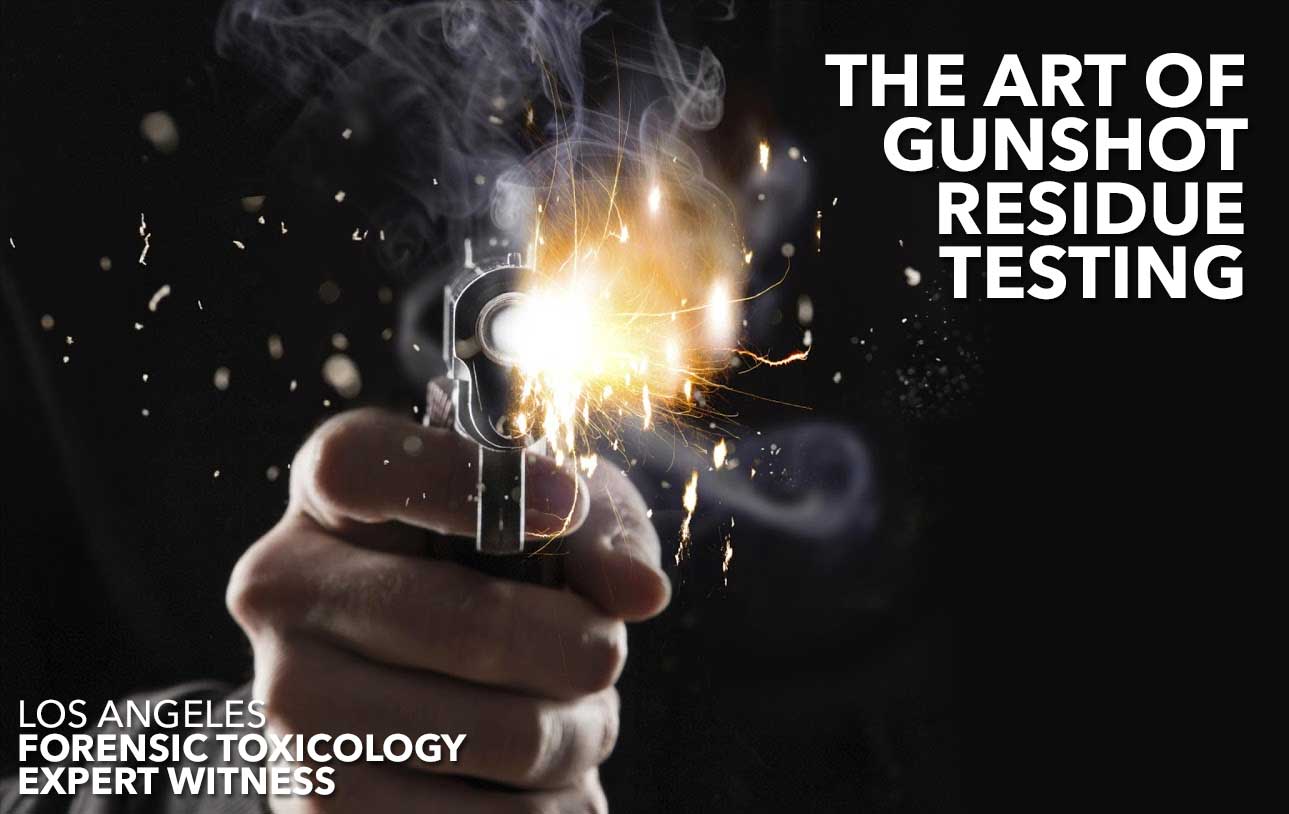The Art of Gunshot Residue Testing

Do you know what happens when you fire a gun, and how law enforcement and expert witnesses use gunshot residue testing to discover if a suspect in a criminal case actually discharged a weapon? Okorie Okorocha explains everything you need to know about gunshot residue testing, it’s validity and why the FBI doesn’t do it.
What Happens When You Pull the Trigger of a Gun?
When someone pulls the trigger of any type of gun, a chemical chain reaction occurs. In most instances, a firing pin strikes something known as a primer cap in the gun’s cartridge. In North America, most primers contain a combination of lead styphnate, barium nitrate, and antimony sulfide, which react to ignite the gunpowder inside the gun’s cartridge. This ignition causes the bullet to be propelled out of the gun and into its target.
At the same time as the bullets leaves the gun, small metal-containing particles produced during the internal gunpowder explosions are released from the weapon. These particles, known as gunshot residue (GSR), fly out of the gun and onto the skin and clothing of the person firing the gun. Gunshot reside usually contains chemicals from the gun’s primer, namely antimony, lead and barium.
The Art of GSR Testing – How it’s Done
As science rapidly changes and evolves, so do the methods used to catch criminals and examine evidence. The following sampling and analysis techniques are used by industry professionals in today’s crime-ridden environment.
-
Sampling
Crime scene investigators and police officers sample GSR by using adhesive lifters. It is vital that anyone collecting gunshot residue wear proper protective gloves to ensure there is no cross contamination. In particular, police officers who carry firearms or who are exposed to GSR themselves must take proper precautions to ensure they do not transfer gunshot residue onto the person they are sampling.
Sampling often takes place before suspects are transported to a police station. A 2006 gunshot residue symposium hosted by the Federal Bureau of Investigation highlighted the fact that GSR is frequently present in the back of police vehicles, and can even be found on handcuffs. Those present at the symposium agreed that samples should be taken immediately, and, if immediate sampling was not possible, the subject’s hands should be placed into a sterile bag to prevent contamination.
-
Analysis
GSR analysis has improved since its inception in the early 1970s. Today, technicians use scanning electron microscopy (SEM) machines to automatically analyze adhesive filters. If the SEM machine finds evidence of GSR particles, it then documents the number of particles. In certain instances, fireworks, brake fluid and exploded airbags have resulted in false positive GSR tests. However, these contain additional elements or chemicals that are not found in gunshot residue, which is why further examination is often required.
Problems with GSR Testing – Cross Contamination
One of the main issues with gunshot residue testing is cross contamination. Although GSR will be found on the body of the person who originally discharged the weapon, it can also be found on victims and witnesses standing nearby. GSR can land on anyone and anything, and stay there for an indefinite period of time
It is also possible for GSR to be found on a person who was not involved in a crime. In the United States, guns are prevalent throughout society, and it is not uncommon for a civilian walking down the street to have GSR on their person (in countries such as Japan, where guns are not popular, civilians are less likely to have evidence of GSR on their clothing). In fact, it is possible for someone who has never come into contact with a gun to have gunshot reside on their clothing, because GSR is transferable. This means that lab technicians or crime scene investigators can transfer GSR to samples as well.
By the mid-2000s GSR testing decreased to the point where the FBI closed its gunshot residue testing facility. In 2006 the Bureau released a statement claiming that while it supported GSR testing and the science behind it, the Bureau itself would no longer conduct GSR testing.
Today, GSR testing is used more to corroborate points than as leading evidence. Remember, an expert witness is your best option when considering gunshot residue in any legal or criminal case.




